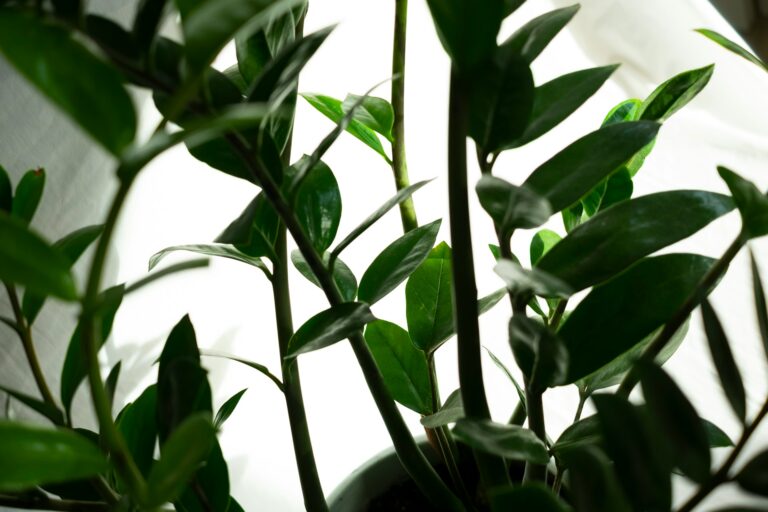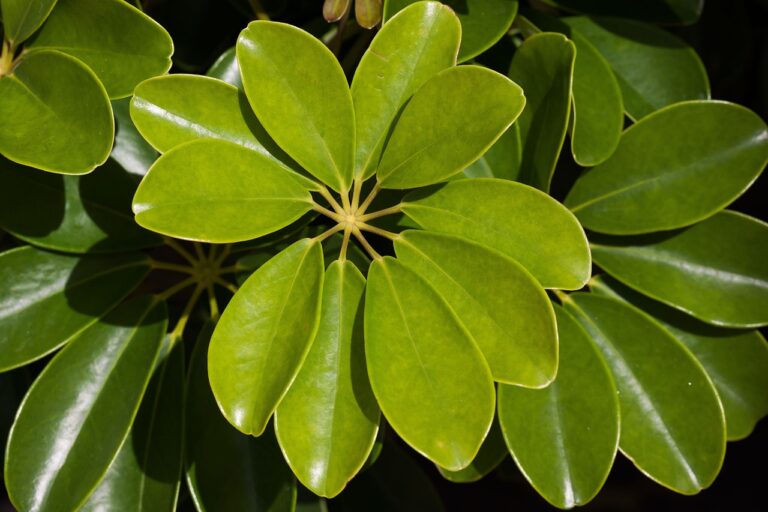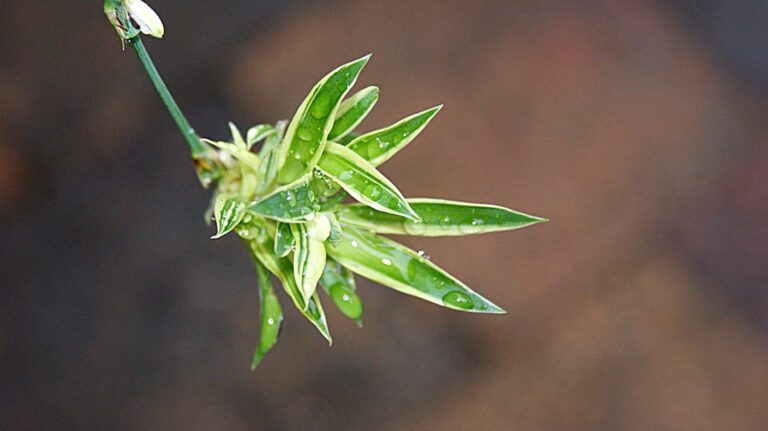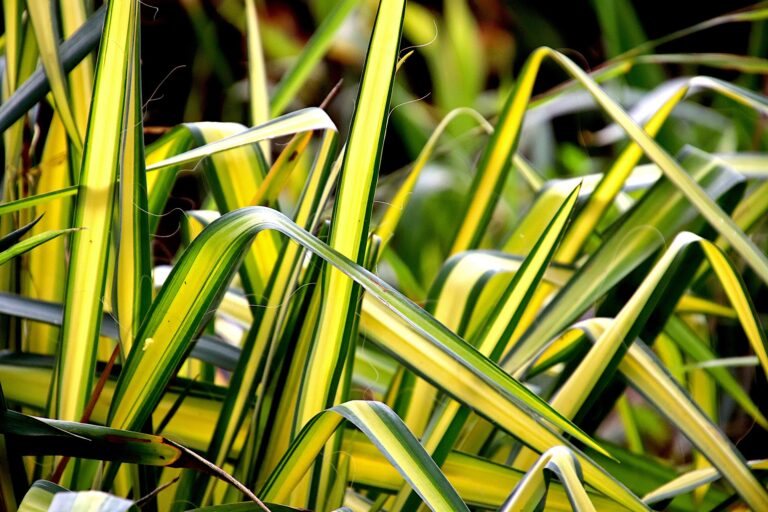Pothos plant, also known as Epipremnum aurem, is a popular vine plant grown as a houseplant. The plant is grown because of its attractive flowers, which are easy to plant and care for. It’s the perfect plant for a beginner or a lazy person who just wants a plant that isn’t delicate.
However, despite being easy to care for, they are not immune to problems. The most common problem is pothos plant turning black, especially the leaves. The leaves show this sign when the plant isn’t receiving proper care.
So, what is the cause of pothos plant leaves turning black? Pothos leaves turn black because of the following reasons;
- Improper lighting
- Cold temperatures
- Improper watering
- Pests and diseases
- Overfertilizing
In this article, we will discuss the different reasons that cause pothos leaves to turn black and how to fix them.
Why are my pothos leaves turning black?
The first time you spot a black leaf on your pothos can be disheartening because you know the plant has a problem. At the same time, you know that you can fix it if you find the problem early.
Let’s look at the cause of black leaves on pothos.
Improper lighting
The sun is a significant cause of black leaves on pothos. Usually, we associate it with too much direct sunlight. Too little sunlight causes the leaves to turn yellow or brown.
When the plant sits in direct sunlight, the sun’s intensity can increase, burning some parts of the leaf. The burnt part will turn black. On some plants, it causes black or brown tips, and in other it forms black patches on different parts of the leaves.
You need to move the plant away from direct sunlight to fix this problem. Place it in an area with bright indirect sunlight. That way, the plant receives enough sunlight to grow.
Cold Temperatures
Pothos are known to thrive in warm environmental conditions. The temperatures should range from 70 to 90 degree Fahrenheit. However, during winter, temperatures drop to freezing.
The freezing cold can affect your plant, causing the leaves to turn black. If you don’t move the plant to warm temperatures, it will wilt and experience stunted growth. Other times the plant dies from cold.
Improper watering
Many people don’t know how to water a plant correctly. The result is usually overwatering or underwatering. Overwatering gives the plant excess water, while underwatering is giving it little water.
Pothos like moist, well draining soil. When you overwater, the soil becomes waterlogged, creating a good medium for the growth of fungi. Since fungi grow well in wet soils, they produce and cause root rot. As a result, the pothos leaves turn black from the damage.
With overwatering, the leaves will turn yellow first before turning black or brown, indicating that the problem is serious.
When trying to fix overwatering, first check the damage done to the plant. If there is minimum damage, you can let the soil dry completely for a week and check if it recovers after a 2 to 3 weeks. If damage is severe, you must repot the plant with fresh potting soil and a clean container. After repotting, let the plant sit for a while before watering again.
On the other hand, underwatering can cause pothos plant turning black. The first sign is brown tips, which slowly turn the plant black as it dies.
Underwatering is easy to fix. Adjust your watering schedule and give the plant enough water. Test the soil using a moisture meter to check the moisture content in the soil before watering. That allows you to know the right time to water the plant.
Prune the affected parts of the plant. If you leave the dead parts on the plant, they can spread to other parts, and you will end up throwing away the whole plant.
Pests and diseases
Pests and diseases can cause pothos plant leaves to turn black. For instance, pests such as aphids suck on the sap causing the leaves to turn yellow, and as they die, they turn black. As the leaves drop off the plant, they can spread to other leaves, causing the plant to die.
Some pests produce a sticky substance known as honeydew that they leave on the leaf, creating a black patch.
Remove the pests by hand if they are visible, or wash them off using a mixture of water and neem oil. Ensure that you remove all the pests, including those under the leaves.
On the other hand, diseases such as blight can attack your pothos plant, causing the leaves and stems to turn black. Diseases are easy to manage during their early stages, but it’s better to destroy the plant if you find them late.
Overfertilizing
Pothos plant like to grow in well fertilized soils. But that doesn’t mean you add excess fertilizer to the soil. Too much of something good is dangerous.
Overfertilizing a pothos plant can cause the leaves to turn black due to a condition called fertilizer burn. Fertilizer burn occurs when too much fertilizer is applied to the soil, causing the roots to absorb more nutrients than the plant can use.
The excess nutrients can accumulate in the leaves, damaging the leaf tissue, which can turn the leaves black. This is because the excess nutrients can disrupt the plant’s balance of minerals and salts, leading to dehydration and damage to the leaf cells.
In addition, overfertilization can also lead to a buildup of salts in the soil, which can further damage the roots and prevent them from absorbing water and nutrients properly. This can also lead to the leaves turning black.
To prevent overfertilization and fertilizer burn, it is important to follow the instructions on the fertilizer packaging and only apply the recommended amount. It is also important to flush the soil periodically with plain water to remove any excess salts that may have accumulated. Learn how to flush soil without overwatering.
How to care for pothos plant
To care for a pothos plant and prevent the leaves from turning black, here are some tips to follow:
- Watering: Pothos plants prefer to be kept evenly moist but not overly wet. Allow the soil to dry out slightly between watering. Avoid overwatering, which can lead to root rot and other problems.
- Light: Pothos plants prefer bright, indirect light, but can also tolerate low light conditions. Avoid placing them in direct sunlight, which can scorch the leaves.
- Fertilizer: Use a balanced fertilizer monthly during the growing season (spring and summer). Follow the instructions on the package and avoid overfertilizing.
- Humidity: Pothos plants prefer moderate to high humidity. Mist the leaves regularly or place a tray of water near the plant to increase humidity.
- Pruning: Regularly prune back the stems to encourage bushier growth and to prevent the plant from becoming too leggy.
- Soil: Pothos plants prefer well-draining soil. Use a well-draining potting mix and avoid heavy soils that can retain too much moisture.
- Pest control: Check your pothos plant regularly for signs of pests, such as spider mites or mealybugs. If you notice any pests, treat them immediately with an insecticidal soap or horticultural oil.
Frequently Asked Question
Should I cut off black leaves from pothos?
If the pothos plant has black leaves, you should cut them to prevent spreading to other parts of the plant. Ensure that you cut off even parts of the stems that are affected. Cut them using a sharp, sterilized gardening knife or scissors.
How do I know if my pothos has root rot?
The first sign of root rot is the plant’s lower leaves start to turn yellow. It’s a sign that the leaves don’t have enough nutrients to survive. Also, you can check the roots. Healthy roots are white and firm, while rotten roots are brown or black, slippery, mushy, and produce a terrible odor.
Can I spray water on my pothos leaves?
It’s not advisable to spray water on leaves. Always spray on the soil around the plant. If you are trying to increase humidity by misting, use a pebble tray. It involves placing the plant on a pebble tray that contains water.
How often do you water pothos?
The best time to water pothos is every 1 to 2 weeks. That allows for the soil to dry before the next watering. Due to environmental changes, you can water more during summer and water less during winter.




